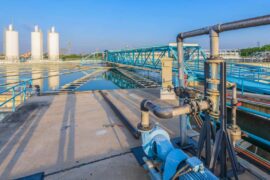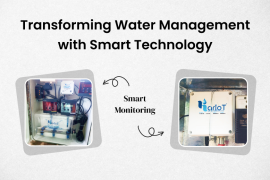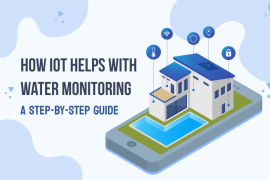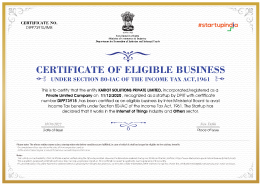Hydroponics is the practice of growing plants in a nutrient solution or water without soil. This method is the aptest one for its high yields, and it also helps in the conservation of water and reduces pollution. With so many kinds of hydroponic systems available on the market, you can explore which ones are best for your garden. In this article, we’ll cover six common types of hydroponics systems typically used for indoor gardening:
1. Deep water culture systems
Plants floating in aerated water are called deep water culture hydroponics. Deepwater culture systems, often known as DWC systems, are the most simple and widely used hydroponics technological solutions. A DWC system suspends plants in net pots over a deep reservoir of oxygen-rich nutritional solution. The plants remain submerged in the solution, ensuring that it has constant access to nutrients, water, and oxygen. Many believe deep water culture to be the most natural kind of hydroponics.
Water oxygenation is critical for the plant’s life since the root system remains floating in the water at all times. The plant will drown in the liquid if its roots don’t get enough oxygen. To provide oxygenation to the entire system, place an air stone connected to an air pump at the bottom of the reservoir. The air stone’s bubbles will aid in the circulation of the nutritional solution as well.
Without the use of expensive hydroponics equipment, a deep water culture system is either designed at home or in the classroom. To house, the net pots lay a floating surface like styrofoam on top of the solution in a clean bucket or old aquarium. Only the roots of DWC plants should be soaked in the solution. There should be no stem section or submerged foliage. You may even leave the roots above the waterline for about an inch and a half. The airstone bubbles will erupt from the surface and splash onto the exposed roots, ensuring that they do not dry up.
2. Wick systems
Plants get nestled in growth media on a tray that rests on one of the top reservoirs in a wick system. A water solution containing dissolved nutrients gets kept in this reservoir. Wicks are often used to transport water from the reservoir to the growth tray. Water and nutrients run up the wick and saturate the growth medium around the plants’ root systems. These wicks may be created out of rope through the string to feel. Wick systems are the most basic type of hydroponic system. Wick systems are passive hydroponics, which means they don’t need mechanical components like pumps to work. It makes perfect for circumstances when power is intermittent or absent.
Why does Wick Systems work better compared to other systems?
Capillary action is what makes Wicks systems operate. The wick absorbs water like a sponge and distributes the nutrient solution to the porous growth media when it comes into touch with it. Wick system hydroponics are only effective if they’ve been in conjunction with a growth medium that allows for easy fertilizer and water transfer. Coco coir (fibres extracted from the husks of coconuts) retains moisture well and is pH neutral. Perlite is also pH neutral and very porous, making it an excellent choice for wicking systems. Vermiculite is porosity and has a high capacity for cation exchange. That indicates that it can store nutrients for later use. For wick hydroponic systems, these three growing media are the best.
Wick systems are slower than other hydroponic systems, which limits the kind of plants that may be grown with them. Ensure that at least one wick was running from the reservoir for each plant in the growth tray. Close to the plant’s root system, these wicks should be inserted. Many people opt to add an air stone and an air pump to the wick system’s reservoir, even though it is capable of running without aeration. The hydroponic system will benefit from more oxygenation.
3. Nutrient film technique systems
Plants get suspended above a stream of continually flowing nutrient solutions that washes over the ends of the plant’s root systems in nutrient film technique (NFT) systems. Water can trickle down the length of the grow tray before draining into the reservoir below because the channels supporting the plants are slanted. The reservoir’s water is then carbonated using an airstone. The nutrient-rich water is subsequently pumped out of the reservoir and returned to the channel’s top by a submersible pump. A recirculating hydroponic system is the nutrient film technology.
How do NFT Hydroponic Systems Work?
The roots of the plants in an NFT system are not submerged, unlike in deep water culture hydroponics. Instead, the stream (or “film”) only runs over the roots’ tips. The tips of the feet will draw moisture into the plant, while the exposed root system will get plenty of oxygen. The channels’ bottoms are grooved, allowing the shallow film to slide easily over the root tips. It also keeps water from collecting or damming against the roots.
Even though nutrition film technology systems recycle water continuously, draining the reservoir and replenishing the nutrient solution every week or two is a good idea. It guarantees that your plants get enough nourishment. A gradual slope is necessary for NFT channels. If the incline is too great, the water will rush down the channel without properly feeding the plants. The system will overflow as well as the plants will drown if too much water comes down the course. NFT hydroponics is widely used in commercial settings because it can support many plants per channel and is easily mass-produced. Lightweight plants, such as mustard greens, kale, lettuce, & spinach, along with fruits such as strawberries, are ideally suited for nutrient film technology systems. A trellis will be needed to support the weight of heavier fruit-bearing plants such as tomatoes and cucumbers.
4. Ebb and flow systems
Ebb and flow hydroponics use a reservoir below to flood a plant bed with nutrient solution. In the storage, a timer gets built inside the submersible pump. The pump fills the grow bed with water and nutrients as soon as the timer goes off. When the timer goes off, gravity slowly drains the water from the grow bed and returns it to the reservoir. An overflow tube is included in the system to guarantee that flooding does not exceed a specific threshold, causing harm to the plants’ stalks and fruits.
Plants in an ebb and flow system are sometimes not exposed to water, unlike those in the preceding schemes. The plants absorb the nutrient solution through their root systems while the grow bed gets flooded. The roots dry out as the water level drops or the grow bed empties. In the time before the next flood, the dry roots oxygenate. The size of your grow bed and the size of your plants determine the time between flooding.
Common Growing Technologies in EBB and Flow Systems:
One of the most common hydroponic growing technologies is ebb and flow systems (also known as flood and drain systems). The plants’ rapid and robust development gets aided by the quantity of oxygen and nourishment available to them. The ebb and flow mechanism is flexible and easy to customize. A variety of net pots and fruits and vegetables can be placed in the grow bed. The ebb and flow system allows you to experiment with your plants & the medium may be more than any other hydroponic system.
Almost every form of the plant may be accommodated by an ebb and flow system. The size and depth of your grow tray are your main restrictions. Root vegetables, as opposed to lettuce or strawberries, will require a much deeper bed. Popular ebb and flow crops include tomatoes, peas, beans, cucumbers, carrots, and peppers. Trellises can also be attached to the grow bed directly. Some of the most common growth mediums in the ebb and flow hydroponics are “grow rocks” and enlarged clay pebbles (hydroton). These are washable and reusable, light, and will hold moisture while draining. In the ebb and flow systems, this is a critical attribute.
5. Drip systems
The aerated and nutrient-rich reservoir distributes fluid through a network of tubes to individual plants in a hydroponic drip system. The solution is slowly dripped into the growth substrate around the root system, keeping the plants hydrated and fed. Drip systems are the most common and widely used hydroponic technique, especially among commercial growers. Both individual plants and large irrigation operations can benefit from drip irrigation.
Recovery and non-recovery drip systems are the two types of drip system hydroponics. Excess water is drained from the grow bed into the reservoir and recirculated during the next drip cycle in recovery systems, which are more popular with small, at-home producers. Excess water leaks out of the growth media and goes to waste in non-recovery systems. Commercial growers favour this strategy. Even though non-recovery drip systems may appear and be inefficient, large-scale producers are water-wise. These drip systems are either intended to supply the exact quantity of solution needed to keep the growth media surrounding the plant moist. To keep waste to minimum non-recovery drip systems use complex timings and feeding schedules.
If you’re growing plants in a recovery drip system, you’ll need to be aware of any changes in the fertilizer solution’s pH. It is true of any system that recirculates wastewater into the reservoir. Because plants deplete the solution’s nutrient level and change the pH balance, the grower will need to check and modify the solution reservoir more frequently than in a non-recovery system. The growing medium can potentially get oversaturated with nutrients, necessitating frequent washing and replacement.
6. Aeroponics
Plants are suspended in the air and exposed to nutrient-rich mist in aeroponic systems. Aeroponics systems are enclosed frameworks that can accommodate a large number of plants at once, such as cubes or towers. A reservoir holds water and nutrients, which are then delivered through a nozzle that atomizes the solution and disperses it as a thin mist. Normally, the mist is discharged from the top of the tower, cascading down the room. Some aeroponics systems continuously spray the plant’s roots, similar to how NFT uses across to expose the roots to nutrient film. Others work similarly to an ebb and flow system, misting the roots during regular intervals. Aeroponics thrive without the need for a substrate medium. Because the roots get constantly exposed to air, they may take up oxygen and develop faster.
Aeroponics uses lower water than any other hydroponics system. Growing a crop aeroponically uses 95 percent less water than growing a crop in an irrigated area. Their perpendicular construction is meant to take up as little space as possible while allowing several halls to get stored in one area. Indeed in defined settings, aeroponics may induce high yields. Aeroponic shops also grow more snappily than hydroponically cultivated shops due to their increased oxygen exposure.
Aeroponics allows for year-round harvesting. In an aeroponic atmosphere, vine plants and nightshades like tomatoes, bell peppers, and eggplants thrive. Lettuce, baby greens, herbs, watermelons, strawberries, and ginger all thrive in this environment. Fruiting trees, on the other hand, are too massive and heavy to be cultivated aeroponically, as are subterranean plants with extensive root systems such as carrots and potatoes.











